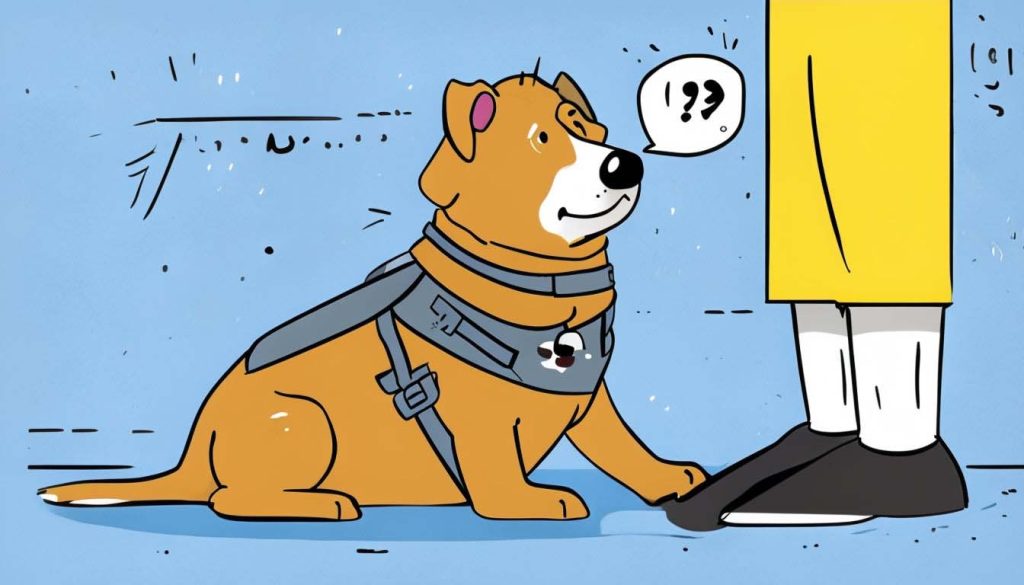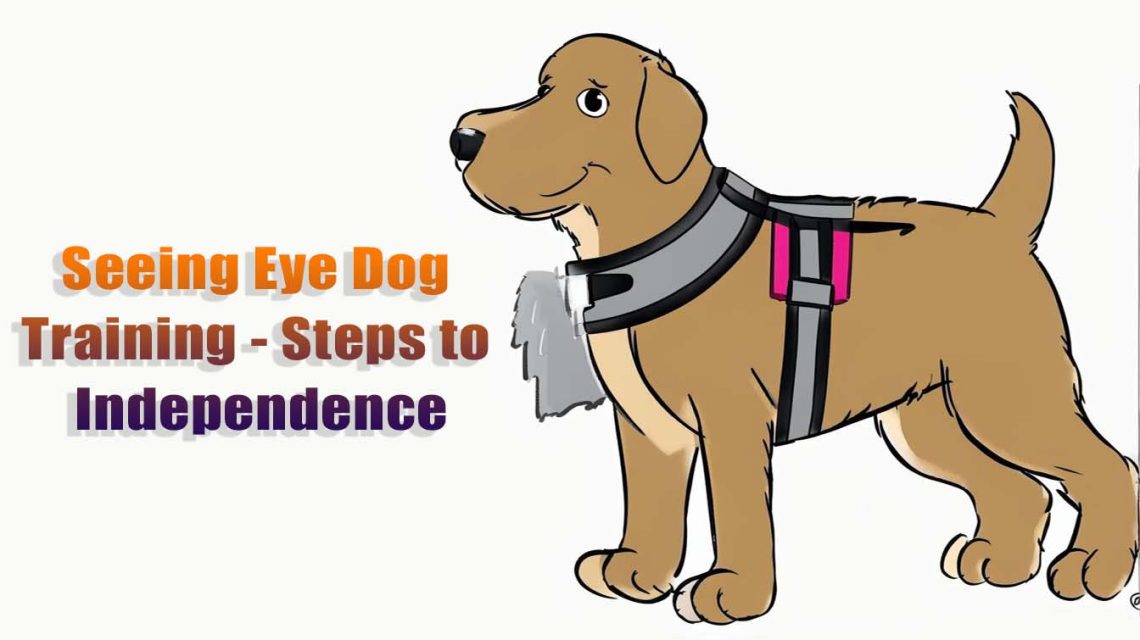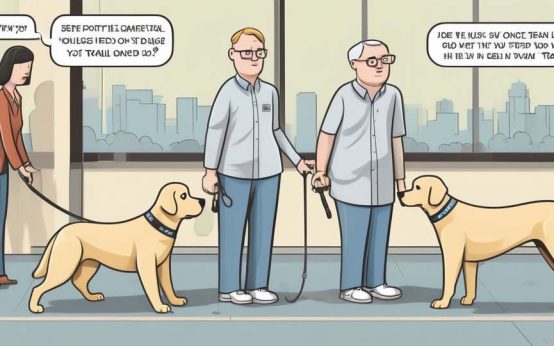Seeing eye dogs offer life-changing assistance, providing independence and security for individuals who are visually impaired. These dogs undergo an intensive training process that prepares them to be reliable, safe guides, capable of making decisions and responding to complex situations. Seeing eye dog training is not only a journey of teaching skills but also of building trust and companionship.
In this guide, we’ll explore the stages of seeing eye dog training, from early socialization to specialized commands, offering insight into the journey that turns puppies into dependable guides.
The Role of Seeing Eye Dogs in Independence
Seeing eye dogs play a crucial role in helping their handlers navigate daily life safely. Their responsibilities extend beyond basic commands, as they must make independent decisions to protect their handler.
1. Ensuring Safety in Various Environments
Seeing eye dogs are trained to guide their handler through all types of terrain, busy streets, and public places, allowing for greater independence and confidence.
2. Providing Companionship and Security
Beyond being guides, these dogs become trusted companions. Their presence offers emotional support, providing both security and friendship to their handlers.
3. Developing Life Skills for Diverse Situations
Seeing eye dogs learn how to navigate challenging environments, avoid obstacles, and make smart decisions when faced with unexpected situations, making them reliable partners.

Steps of Seeing Eye Dog Training
Training a seeing eye dog involves multiple stages, each focusing on essential skills and building a foundation for reliable guidance.
1. Early Socialization and Puppy Raising
The journey begins with socialization, where puppies are introduced to diverse environments, sounds, and people to help them develop confidence and adaptability.
- Volunteer Puppy Raisers: Seeing eye organizations work with volunteer puppy raisers who provide homes for puppies during this early stage, teaching them basic obedience and social skills.
- Exposure to Various Environments: These puppies experience different sounds and locations, from quiet homes to busy streets, making them adaptable to the environments they will face as guides.
2. Basic Obedience Training
Once the puppy reaches a certain age, usually around one year, they begin formal training. Basic obedience commands set the stage for the specialized skills they’ll need.
- Fundamental Commands: Basic commands such as “sit,” “stay,” and “come” ensure that the dog listens and responds reliably in any environment.
- Leash Training: Dogs are taught to walk calmly on a leash, responding to guidance from the handler and maintaining focus even in distracting situations.
3. Advanced Guide Dog Training
Advanced training is the core of seeing eye dog preparation, focusing on specific guiding skills that allow these dogs to safely and effectively assist their handlers.
- Obstacle Avoidance: Dogs learn to detect obstacles like curbs, steps, and low-hanging objects, guiding their handler safely around these hazards.
- Intelligent Disobedience: One of the unique skills seeing eye dogs learn is intelligent disobedience. This means they can ignore commands if following them would lead to danger, such as refusing to walk forward if a car is approaching.
- Directional Commands: Dogs are trained to respond to directional cues, such as “left,” “right,” and “forward,” allowing the handler to guide them while navigating different paths.
4. Matching Dogs with Handlers
Once training is complete, dogs are matched with handlers based on compatibility, including factors like walking speed, personality, and lifestyle.
- Initial Bonding: Handlers and dogs spend time getting to know one another, developing trust through bonding exercises.
- Training as a Team: During this phase, handlers learn to communicate effectively with their dog, practicing commands and developing a routine that fits both their needs.
Key Skills Taught in Seeing Eye Dog Training
Each seeing eye dog must master specific skills to ensure safety, reliability, and effective guidance.
1. Obstacle Avoidance and Route Planning
Seeing eye dogs are trained to detect and navigate around obstacles. Whether it’s avoiding curbs, barriers, or other hazards, they learn to guide their handler safely.
- Practice in Various Settings: Training includes simulated environments and real-world practice to prepare dogs for busy cities, parks, and public buildings.
- Guidance in Crowds: Dogs learn to maneuver through crowds, helping their handler avoid collisions and maintaining a safe walking pace.
2. Crossing Streets and Detecting Danger
Street crossings are one of the most critical skills seeing eye dogs must master. They learn to wait at curbs, assess traffic, and only cross when it’s safe.
- Understanding Traffic Flow: Dogs are taught to recognize traffic patterns and determine when it’s safe to move forward.
- Responding to Verbal Cues: Handlers use specific verbal commands for street crossings, and dogs respond by checking traffic and guiding their handler accordingly.
3. Intelligent Disobedience for Safety
Intelligent disobedience is a key part of seeing eye dog training, as it allows dogs to make safety-based decisions, even when instructed otherwise.
- Assessing Dangerous Situations: Dogs learn to evaluate situations, such as oncoming traffic, and refuse commands that could endanger their handler.
- Trust-Based Decision-Making: Handlers rely on their dog’s judgment in these situations, fostering a bond of trust and safety.
Breeds Commonly Used for Seeing Eye Dog Work
Certain breeds are ideal for seeing eye dog roles due to their temperament, intelligence, and size. Here are a few popular breeds:
1. Labrador Retrievers
Known for their calm demeanor, intelligence, and trainability, Labradors are popular seeing eye dogs. They are friendly, adaptable, and handle various environments well.
2. Golden Retrievers
Golden Retrievers are gentle, responsive, and focused, making them excellent for guide work. They bond easily and are patient, which is essential in guiding.
3. German Shepherds
German Shepherds are known for their loyalty, focus, and confidence. They excel in environments that require additional structure and discipline.
Benefits of Seeing Eye Dogs for Handlers
Seeing eye dogs offer profound benefits, enhancing both practical independence and emotional well-being.
1. Increased Independence and Freedom
Seeing eye dogs empower handlers by making it possible for them to navigate their environment safely, allowing for greater freedom in daily activities.
2. Improved Social Interaction
Having a seeing eye dog often fosters social connections, as these dogs serve as conversation starters, helping handlers feel less isolated.
3. Emotional Support and Companionship
Seeing eye dogs provide companionship that reduces stress and anxiety, creating a sense of stability and comfort for their handlers.
Supporting Seeing Eye Dog Programs
Seeing eye dog programs rely on community support to continue their impactful work. Here’s how you can help:
1. Volunteer as a Puppy Raiser
Puppy raisers play an essential role by providing foundational training and socialization.
- Requirements for Raising: Volunteers house and socialize puppies, teaching them basic obedience and preparing them for advanced training.
- Guidance Provided: Most organizations support volunteers with resources and training, helping them effectively prepare puppies for their role.
2. Donating to Support Training and Placement
Training a seeing eye dog costs thousands of dollars, but most organizations offer dogs at no cost to the handler through donations and sponsorships.
3. Advocate for Access and Respect
Advocating for access rights ensures that seeing eye dogs can accompany their handlers in public spaces without challenges. Educating others about the role and rights of these dogs supports their essential work.
FAQs About Seeing Eye Dog Training
How long does it take to train a seeing eye dog?
- The training process, including socialization, basic training, and advanced guide skills, generally takes 18-24 months.
Do handlers have to pay for a seeing eye dog?
- Most organizations provide seeing eye dogs free of charge to qualified handlers, covering the costs through donations and grants.
What happens if a dog doesn’t complete training?
- Dogs that do not complete the training program are often adopted out to loving homes or serve as therapy or companion animals.
How are dogs matched with handlers?
- Dogs are matched with handlers based on factors like pace, personality, and lifestyle, ensuring compatibility and safety.
Can seeing eye dogs work in any environment?
- Yes, seeing eye dogs are trained to navigate various environments, including busy cities, parks, and public transportation.



 Seeing Eye Dog Training – Path to Independence
Seeing Eye Dog Training – Path to Independence